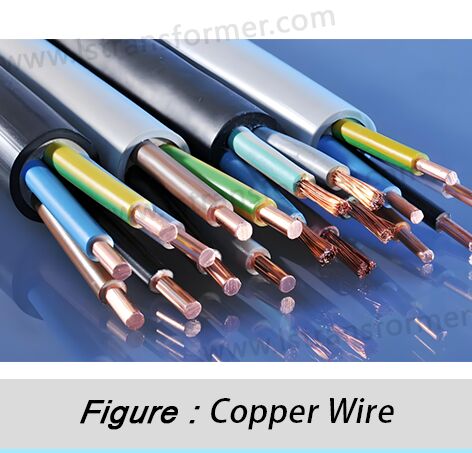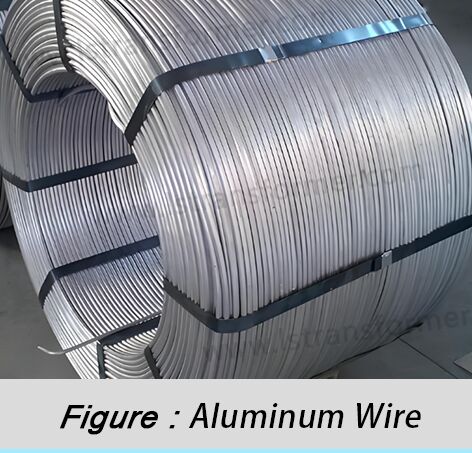Enroulement en cuivre ou en aluminium dans les transformateurs : équilibre entre coût, efficacité et durée de vie
Enroulement en cuivre ou en aluminium dans les transformateurs : équilibre entre coût, efficacité et durée de vie
Dans la fabrication de transformateurs et de réacteurs, le choix du matériau conducteur des bobinages est une décision cruciale qui impacte directement les performances, le coût et la fiabilité à long terme. Le cuivre (Cu) et l'aluminium (Al) sont les deux matériaux conducteurs les plus couramment utilisés, chacun présentant ses propres avantages et limites. Face à l'augmentation des normes mondiales d'efficacité énergétique (telles que les normes CEI 60076 et IEEE C57.12.00) et à la fluctuation des prix des matières premières, les ingénieurs et les responsables des achats doivent parfaitement comprendre les propriétés de ces matériaux pour faire des choix optimaux. Cet article propose une analyse approfondie des principales différences entre les bobinages en cuivre et en aluminium dans les applications de transformateurs, notamment en termes de conductivité, de propriétés mécaniques, de comportement thermique, de structure de coût et de fiabilité à long terme, vous aidant ainsi à trouver le meilleur équilibre entre efficacité, coût et durée de vie.
1. Comparaison de la conductivité et de l'efficacité
La conductivité est une mesure clé pour évaluer la capacité d'un matériau à transmettre l'énergie électrique. La norme internationale sur le cuivre recuit (IACS) définit la conductivité du cuivre recuit à 100 %, tandis que celle de l'aluminium est d'environ 61 %. Cela signifie que, pour une même section, un conducteur en aluminium présente une résistance environ 64 % supérieure à celle du cuivre.
La formule de calcul de la résistance est :
R=ρ×(L/A)
Où? :
R = Résistance (Ω)
ρ = Résistivité du matériau (Ω·m)
L = Longueur du conducteur (m)
A = Section du conducteur (m²)
●Comparaison des matériaux cuivre et aluminium
À 20°C, le cuivre a une résistivité de1.68×10−8Ω⋅m, tandis que celle de l'aluminium est
2.82 × 10−8 Ω⋅m. Pour obtenir la même résistance, un conducteur en aluminium nécessite une section environ 60 % supérieure, ce qui a un impact significatif sur la conception du transformateur.
Paramètre | Conducteur en cuivre | Conducteur en aluminium (performances équivalentes) |
Zone transversale | unité 1 | unités 1.6 |
Poids | unité 1 | unités 0.48 |
Résistance CC (même longueur) | unité 1 | unité 1 |
Occupation de l'espace d'enroulement | unité 1 | unités 1.6 |
Tableau 1 : Comparaison des performances des conducteurs en cuivre et en aluminium
Dans la conception pratique des transformateurs, les enroulements en aluminium nécessitent plus d'espace, ce qui peut augmenter la taille du noyau. Cependant, la densité de l'aluminium (2.7 g/cm³) est bien inférieure à celle du cuivre (8.96 g/cm³). Ainsi, malgré leur section plus importante, les enroulements en aluminium sont nettement plus légers, ce qui est avantageux pour les transformateurs de grande puissance, tant pour le transport que pour l'installation.
● Efficacité opérationnelle
Les transformateurs bobinés en cuivre atteignent généralement un rendement de 98 à 99.7 %, tandis que les modèles équivalents en aluminium ont un rendement inférieur d'environ 0.1 à 0.3 %. Pour un transformateur de distribution fonctionnant 8 760 heures par an, cette différence de 0.2 % peut entraîner des pertes d'énergie supplémentaires de plusieurs centaines, voire de milliers de kilowattheures, selon la capacité.
2. Propriétés mécaniques et fiabilité des connexions
Les propriétés mécaniques des conducteurs influencent directement les procédés de fabrication et leur fiabilité à long terme. La résistance à la traction du cuivre (200–250 MPa) est nettement supérieure à celle de l'aluminium (70–100 MPa), ce qui confère aux enroulements en cuivre une meilleure résistance aux forces électromagnétiques lors des courts-circuits.
La norme CEI 60076-5 impose des exigences strictes en matière de capacité de résistance aux courts-circuits des transformateurs, auxquelles les enroulements en cuivre répondent généralement plus facilement.
●Fiabilité de la connexion
La fiabilité des connexions constitue un défi majeur pour les bobinages en aluminium. L'aluminium forme une couche d'oxyde dense (Al₂O₃) à haute résistivité, difficile à éliminer. De mauvaises connexions peuvent créer des points chauds, accélérant ainsi le vieillissement de l'isolation. Les transformateurs modernes remédient à ce problème grâce à :
(1) Technologie de placage :Le placage à l'étain ou à l'argent sur les conducteurs en aluminium empêche l'oxydation et améliore la résistance de contact.
(2)Connecteurs spéciaux :Cales en métal de transition ou bornes composites.
(3) Antioxydants :Pâte conductrice pour inhiber l'oxydation.
L'oxyde de cuivre (Cu₂O) est plus conducteur et se rompt facilement sous la pression de contact, garantissant des connexions plus stables. La norme IEEE C57.18.10-1998 souligne les exigences de connexion des transformateurs bobinés en aluminium.
●Coefficient de dilatation thermique
La différence dans les coefficients de dilatation thermique est également notable. Le coefficient de l'aluminium (23.1×10−6/°C) est supérieure à celle du cuivre (
17 × 10−6/°C), ce qui signifie que les bobinages en aluminium subissent des contraintes mécaniques plus importantes lors des cycles thermiques, ce qui peut entraîner une fatigue de l'isolant. Les conceptions modernes atténuent ce phénomène grâce à :
(1)Utilisation d’une isolation élastique pour amortir les contraintes thermiques.
(2)Optimisation des structures de support d'enroulement.
(3)Contrôle des fluctuations de température de fonctionnement.
3. Structure des coûts et économie du cycle de vie
●Structure des coûts
Le coût des matériaux est un facteur clé dans le choix d'un conducteur. Historiquement, le prix de l'aluminium représente 20 à 30 % de celui du cuivre, mais les comparaisons directes de prix peuvent être trompeuses en raison de :
(1) Volume du matériau :L'aluminium nécessite 1.6 fois le volume mais seulement 50 % du poids pour des performances équivalentes.
(2)Fabrication :L'aluminium nécessite une manipulation particulière, ce qui augmente les coûts de main-d'œuvre.
(3)Transport/Installation :L’aluminium plus léger réduit ces coûts.
(4) Perte d'énergie :Une résistance plus élevée augmente les coûts opérationnels.
Élément de coût | Transformateur à enroulement de cuivre | Transformateur à enroulement d'aluminium |
Coût d'achat initial | $15,000 | $12,500 |
Les coûts d'installation | $3,000 | $2,700 |
Coût annuel des pertes énergétiques | $1,200 | $1,450 |
Coût des pertes énergétiques sur 30 ans | $36,000 | $43,500 |
Coût de maintenance | $2,000 | $3,000 |
Coût total du cycle de vie | $56,000 | $61,700 |
Tableau 2 : Comparaison des coûts du cycle de vie sur 30 ans pour les transformateurs de distribution de 1 000 kVA (exemple)
●Analyse du cycle de vie
Une analyse du coût du cycle de vie (ACVC) montre que, si les transformateurs en aluminium présentent un coût initial inférieur de 15 à 20 %, les pertes énergétiques à long terme peuvent compenser ce coût. Des études du Département de l'Énergie des États-Unis indiquent que pour les transformateurs de taille moyenne fonctionnant plus de 4 000 heures par an, l'investissement plus important du cuivre est généralement rentabilisé en 4 à 7 ans grâce aux économies d'énergie.
Cependant, l’aluminium peut être plus économique dans :
(1) Applications à faible charge (par exemple, transformateurs de secours).
(2)Régions avec des coûts d’électricité très bas.
(3)Installations temporaires nécessitant des déplacements fréquents.
(4) Environnements sensibles au poids (par exemple, plates-formes offshore).
4. Performances thermiques et durée de vie prévue
La durée de vie du transformateur dépend principalement du vieillissement thermique de l'isolation, lui-même influencé par la température de l'enroulement. La norme IEEE C57.91-2011 indique que le taux de vieillissement de l'isolation double pour chaque augmentation de 10 °C.
Bien que la conductivité thermique de l'aluminium (235 W/m·K) soit inférieure à celle du cuivre (401 W/m·K), sa section transversale plus grande se traduit souvent par de meilleures performances thermiques globales car :
Résistance thermique
Alors que l'aluminium est plus bas, c'est plus grand
peut entraîner une résistance thermique plus faible, réduisant ainsi l'augmentation de la température et prolongeant la durée de vie de l'isolation.
Cependant, les enroulements en aluminium sont confrontés à des risques de points chauds plus élevés en raison de :
(1)Résistance de contact instable aux articulations.
(2) Effet de peau plus important (grâce à des sections transversales plus grandes).
(3) Espaces induits par les vibrations mécaniques.
Les systèmes modernes de surveillance de la température (par exemple, capteurs à fibre optique) atténuent ces risques. La norme CEI 60076-7 définit les mêmes limites de température pour les deux matériaux (généralement 65 K en moyenne, 80 K au point chaud).
En termes de durée de vie, les transformateurs en cuivre ou en aluminium bien conçus peuvent durer de 30 à 40 ans. Les différences réelles proviennent de :
(1)Profils de charge :L'aluminium est plus sensible aux surcharges.
(2)Environnement :L’aluminium se corrode plus rapidement dans les zones côtières.
(3)Entretien :L'aluminium nécessite des contrôles de serrage plus fréquents.
En résumé
Le cuivre et l'aluminium présentent tous deux des atouts dans les enroulements de transformateurs. Le meilleur choix dépend des priorités de l'application :
(1) Le cuivre excelle dans les besoins à haute efficacité (par exemple, les centres de données, les applications à haute fréquence), les environnements à espace restreint, les scénarios à risque élevé de court-circuit et les zones éloignées avec une maintenance limitée.
(2) L'aluminium offre des coûts initiaux inférieurs, des économies de poids (idéal pour les sous-stations mobiles ou les configurations sensibles au poids) et une meilleure recyclabilité, ce qui le rend adapté aux projets à faible charge, à utilisation intermittente ou à budget limité.
Les technologies émergentes comme l'aluminium cuivré brouillent les frontières traditionnelles. Les décideurs doivent combiner les normes internationales (CEI, IEEE) avec les analyses de coût du cycle de vie et tenir compte des conditions de maintenance et des avancées technologiques pour garantir une fiabilité à long terme.
Contactez-Nous
LuShan, HNE.1975, est un fabricant chinois spécialisé dans les transformateurs et réacteurs de puissance depuis plus de 50 ans. Ses principaux produits sont :Transformateur monophasé, transformateurs d'isolement triphasés, transformateur électrique, transformateur de distribution, transformateur abaisseur et élévateur, transformateur basse tension, transformateur haute tension, transformateur de contrôle, transformateur toroïdal, transformateur à noyau R ; inductances CC, réacteurs CA, réacteur de filtrage, réacteur de ligne et de charge, selfs, réacteur de filtrage et produits intermédiaires à haute fréquence.
Nos transformateurs et réacteurs de puissance sont largement utilisés dans 10 domaines d'application : transport rapide, engins de chantier, énergie renouvelable, fabrication intelligente, équipement médical, prévention des explosions de mines de charbon, système d'excitation, frittage sous vide (four), climatisation centrale.
En savoir plus sur le transformateur de puissance et le réacteur :www.lstransformer.com.
Si vous souhaitez obtenir des solutions personnalisées pour les transformateurs ou les réacteurs, veuillez nous contacter.
WhatsApp:+86 17267488565
Courriel : marketing@hnlsdz.com

 EN
EN
 FR
FR DE
DE ES
ES


